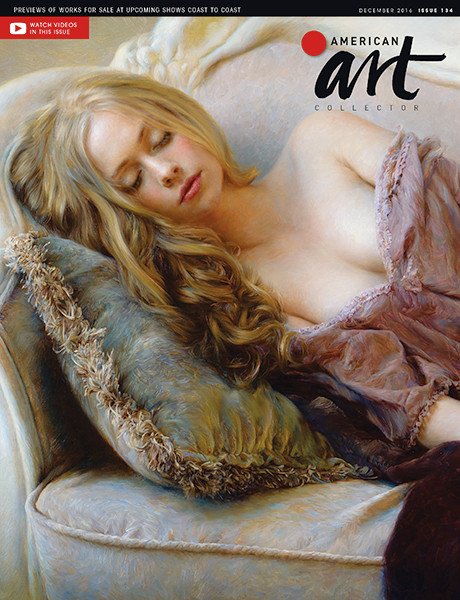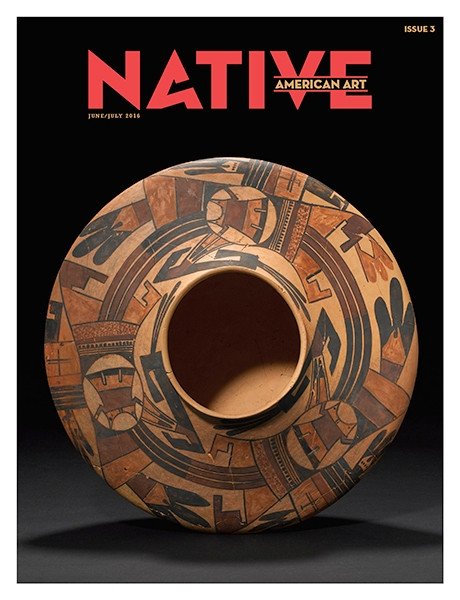An original, fine art oil painting should be more than a mere reflection of what the eyes see. To create something with more emotion and depth, we bring our history, our memories and our personal vision to a painting. If a piece were just about replicating what we see, a camera does an easier, far more detailed job at capturing a scene. A painting should be so much more than that, but how do we push it to another level? I’m going to explain my process of creating a concept to work with. I want options to choose from—different palettes, different compositions and formats and different value keys. I have a few methods of thinking outside of my own box.

Elevated, oil on linen panel, 30 x 24” (76 x 60 cm)
I love to get out and do field studies for gathering information, but that alone does not provide me enough choices to create a larger, organized studio piece.
Artists throughout time have used the technology available to them. Namely, tools to get you thinking differently about a subject and elicit some good old brainstorming and research. My first tool is all about shape placement, and this involves a pencil and paper. Thumbnails have been invaluable since the beginning of painting. How do I simplify to really focus on what is important? How can I organize a painting into the simplest shapes and abstract the details down to what is really important to me? I always encourage my students to make a minimum of three thumbnails to help isolate the statement they want to make.

Reference and thumbnail sketches.

Hillside Patchwork, oil on linen panel, 26 x 30" (66 x 76 cm) This is a high key piece with the majority of the values being one to five and pops of a darker value to create contrast.
This is the best time to move shapes around, delete details that are unimportant, decide where your most important element is, and define your values into lights, mediums and darks (three to five values, no more). Every decision you make abstracts your shapes into something bigger than what you actually see. Let’s talk about compressing values. Shown here are two paintings of mine using those compressed values, Hillside Patchwork and Scarlet Serenade. Let’s call a value scale one to 10, one being white, 10 being black. I know some look at this exactly the opposite, but this is how I see it. A high key painting might consist of one to five, one being the lightest and the darkest value being a five. Maybe we go for a low key painting of five to nine, with five being the lightest value and nine the darkest value. So how do I give myself the option of these compressed values? There is a fabulous app called Notanizer. It not only creates a black-and-white notan, but you can adjust the values into very close value ranges. I love this app because I am able to tell it what compressed values I want instead of it telling me (with a slider of three to four values). I really don’t want just a black-and-white image of my photo, I want to make very intentional value decisions. This is something I have done in my thumbnails long before the app was developed, but the app makes it much more convenient.

Scarlet Serenade, oil on linen panel, 24 x 46" (60 x 116 cm) This is a low key, high contrast piece with the majority of the values being six to nine with a contrasting sky of about a two to three. These are quite difficult to pull off because the gentle shifts in the dark and light values are difficult to navigate contrast from each other.

Coda, oil on linen panel, 26 x 30" (66 x 76 cm) Here is an example of a limited palette: ultramarine blue, cobalt blue, cerulean blue and burnt sienna. So many temperature shifts with such a limited palette!
Palette choices come next on my priority list. I have a standard palette that is used in plein air, the tried-and-true warm and cool in yellow, red and blue. That works great for me in plein air, but when I come back into the studio, my palette becomes more limited and intentional (see Coda on the previous page). I use a color wheel often and think of my palette as complementary, split complementary, full spectrum, etc. When I choose a palette in a studio piece, I stick with it. Making gray out of my limited palette is the most cohesive method I have found. I do take liberties with this—my red might just be a burnt orange, my blue might be an indigo and so on. My favorite paintings have a small slice of the color wheel pie creating grays that I might not have been able to get otherwise.

Wellsville, oil, 20 x 24" (50 x 60 cm) This is an example of the concept of soft and hard edges. Wellsville was an idea of a storm coming through the valley. The fog and the distant mountain are so soft, and anything up front is bigger, warmer, sharper and more detailed. If you squint, you will see that the dark, medium and light values all hold together. This is how I make a painting feel like you can walk into it.

A Moody Blue, oil on linen panel, 30 x 40” (76 x 101 cm) This piece above reflects late fall, just before the snow. There was very dense cloud cover and a heavy atmosphere. I started with a strong grouping of darks and added warm and cool medium values that lead the eye throughout the ground plane. The pond had the strongest contrast with reflections that repeated the dark plane of trees. A quiet sky and soft edges on the back mountain finish the piece without adding too much activity.
After considering my shape placement, value patterns and keys, as well as my palette choices, my next decision is about edges. I love a soft edge in areas that have gentle transitions. Anything upfront or very important might have harder edges. I am thinking about spatial relationships and distance, as well as a scientific approach to atmosphere. The further something recedes in the distance, the softer the edge. Closer subjects have harder edges, more detail and warmer, more saturated color.

As Dusk Falls, oil on linen, 19 x 33" (48 x 83 cm) In this painting, the ground color was done in a purple color against yellows and blues.

Open Range, oil on linen panel, 36 x 48" (91 x 121 cm) This painting is done with a ground of ultramarine blue that quiets the gentleness of the color and atmosphere. Many soft edges allow the viewer to feel the cloud cover.
The next thing I think about as I’m creating my piece is the rhythm (see A Moody Blue). I want to gently but not manipulatively guide your eye through my painting. Look here, look there, all throughout the composition. It is said that the eye enters a painting from the bottom. It is my job as a composer to consider all parts of the painting, not just the center of interest. I think about how I can make secondary shapes and patterns that emphasize but don’t distract from my primary focus. It is my intention to guide the viewer gently but definitively through all parts using contrast of value, color, quiet places and active places. Where there are quiet places, I can use texture to create interest. Active places speak for themselves.

The Trees of Grandeur, oil, 18 x 24" (45 x 60 cm)

Allegro, oil on linen panel, 20 x 24" (50 x 60 cm)
I am an advocate of thick and thin layers of paint. I started my painting journey in watercolor, so thin is very familiar to me. The thicker textures have been a little more challenging for me, so I use my palette knife to represent a confident swipe of color in just the right places. I love to be able to see my group color come up through the surface to provide continuity throughout the painting. My ground color varies with the mood I am trying to convey, either in the same analogous scheme or a complementary scheme to make the surface more active.

In Flight, oil on linen panel, 36 x 24" (91 x 60 cm)

Roughing in the composition and basic shapes for In Flight.
These next two nature scenes, Trees of Grandeur and Allegro, were painted in a series of about six pieces. The tree shapes are applied quite thickly, while the background and some of the foreground are both very thin. I just love the negative shapes up in the tree foliage as they are used for rhythm through the trees.
And lastly, my painting In Flight is a high key piece in a very unusual format that intends for the viewer to move up through the group, into the darker trees, spend a few minutes on the trumpeter swans and move through the distant, quiet mountain. —





